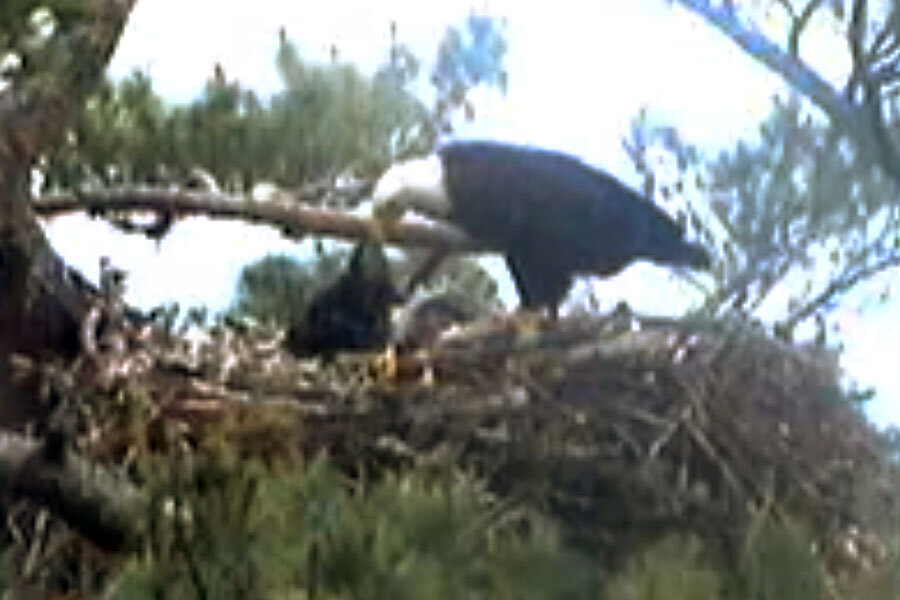Wildlife webcams: When is it OK to intervene?
Loading...
| Portland
Wildlife webcam operators around the world are grappling with a problem: Viewers don't want to see any harm come to critters they've grown to love.
Officials caved in to protests about the grittier side of nature last month in Minnesota, attempting to rescue a baby eagle with a broken wing. In coastal Maine, a struggling eaglet died last weekend after wildlife experts decided to let nature take its course, triggering outcry from viewers across the country.
Such reactions are understandable but misguided, experts say.
"The nest cam is more of a mirror to reflect what's going on with all eagle nests. It's not to be used as a baby monitor to intervene when we see something that makes us feel sad as humans," said Erynn Call, a raptor specialist with the state of Maine.
People's empathy is triggered by cuddly animals, especially the plight of a single creature as opposed to larger group that's suffering, said Nicholas Epley, professor of behavioral science at the University of Chicago.
Nonetheless, experts are loath to get involved.
"The general view is not to intervene," said Patrick Keenan from the Biodiversity Research Institute in Maine. "These are wildlife. They're not pets."
All told, there are hundreds of wildlife webcams showing everything from polar bears to peregrine falcons to clown-like seabirds called puffins. Viewers see remarkable things, like bears catching salmon, or eagles hatching from eggs.
But it's not always pretty.
Two summers ago, viewers watched "Petey" the baby puffin starve on a Maine island because the only available fish were too big to fit in his beak. Viewers begged this spring for someone to do something for a Maine osprey that suffered from a condition causing it to bleed from underneath its eyes.
"Every year, we show polar bears that are starving while waiting for the ice to freeze. People are like, 'Feed the bears!' No, we're not going to feed the bears," said Jason Damata from explore.org, which has about 50 wildlife webcams running at any given time.
Viewers of a webcam sponsored by the Biodiversity Research Institute demanded that wildlife experts do something when it seemed that the parents had abandoned the pair of bald eaglets in Hancock County.
Viewers who watched one of two eaglets die last weekend bore witness to what's happening in many of the more than 600 eagle nests across Maine, said Call, who works for the Department of Inland Fisheries and Wildlife. In general, it's a success when one of two eaglets survives to leave the nest, she said.
But sometimes the pressure to intervene can be too great. In Minnesota, wildlife officials last month were pressured to try to save a baby eaglet with a broken wing. In the end, the eaglet had to be euthanized.
Portia Reid of Dallas, who's watched the Maine eagle nest for three seasons, said she would've supported having someone shimmy up the tree to save the surviving eaglet from starvation if its parents hadn't returned to the nest.
"When you invite humans in, be prepared for human emotions. The majority of (bird watchers) accepts the raw nature of survival of the fittest and understands the no-intervention policy. However, there are cases where intervention is needed," she said.
Copyright 2014 The Associated Press. All rights reserved. This material may not be published, broadcast, rewritten or redistributed.





